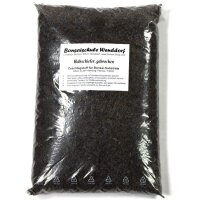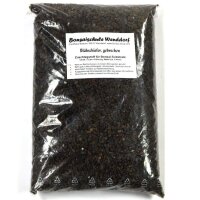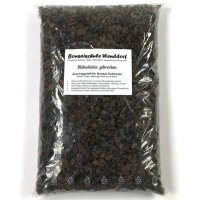Substrates
Bonsai soil Akadama Kanuma Kiryu Pumice gravel
The right bonsai substrate is immensely important for the health of bonsai trees. Choosing an inappropriate soil when repotting a bonsai can quickly severely damage a bonsai.
What distinguishes a suitable bonsai substrate ?
Above all - it is well drained. Avoid fine bonsai substrates and bonsai soil. A well-drained bonsai substrate has a rough texture. Excess water flows quickly through the drainage holes at the bottom of the bonsai pots as the bonsai is being poured. This prevents waterlogging.
The permeability of a bonsai soil can be significantly increased by the addition of substrates such as expanded slate or pumice. In combination with a suitable bonsai fertilizers (for example Biogold, Hanagokoro, liquid fertilizer) such bonsai substrates can also be used purely.
Why is waterlogging a problem ?

Japanese elm in volcanic rock grit
With a coarse bonsai substrate, the water is drained by gravity. In a substrate or a bonsai soil mixture with fine pores, the water is kept in the ground by physical forces.
But too much water in the substrate has two major drawbacks: There is little oxygen in the soil and the soil temperature is low. Oxygen and higher temperature is important for good root growth. Otherwise the roots but also the bonsai grow badly. Therefore: The most important thing about a bonsai substrate is its permeability.
In our bonsai nursery we use in the cultivation of prebonsai almost exclusively expanded slate (volcanic rock grit) mixed (max 30%) with a very coarse soil. Even in the plant pots the growth is up to 3m per year. This way you can quickly thicken young prebonsai.
When potting the bonsai, the root hooks and root claws are good for removing the old bonsai soil.



